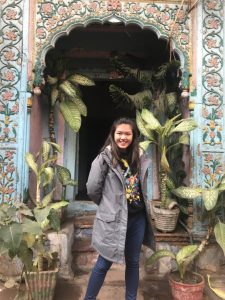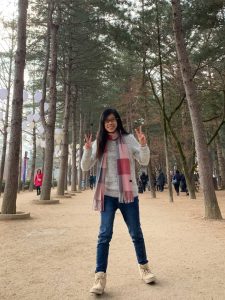CJC-F Announcements, CJC-F Insights
INSIGHTS: THE FORENSICS EXPERTS
On 30 October 2020, we completed our series of seminars by interviewing forensic experts Dr Michael Tay and Ms Lim Chin Chin, who are founding partners of The Forensic Experts Group (“TFEG”). Both have had extensive careers with the HSA and TFEG, and even pioneered the development of Bloodstain Pattern Analysis and Forensic Reconstruction in Singapore. In this seminar, we had the privilege of learning from their wealth of experience.
General Questions
Q: At our previous seminar, Mr Sunil Sudheesan said that he was grateful for TFEG. Was there a specific reason why you decided to create TFEG?
Ms Lim: There is a local need for an organisation like TFEG. While prosecutors have access to forensic experts in HSA who are able to explain the forensics report, we realised that defence lawyers do not have such a luxury. Defence lawyers were often required to outsource their experts from overseas. In addition to the cost of analysis, there was also the cost of flying the expert in for pre-trial discussions and the trial itself. Moreover, it was difficult to find a reliable expert as overseas experts are largely unbeknownst to local lawyers.
Dr Tay: It is important to look at things from a different perspective. We had this common goal of levelling the playing field by providing forensic resources for defence lawyers. Interestingly, Ms Lim shared with me before that Subhas Anandan had previously asked her why there was no independent agency for forensic science. After working at HSA for so long, I wanted to try something new, so we embarked on this bold adventure to apply our skills in different areas and contribute to the justice system in Singapore.
Q: Ms Lim and Dr Tay, you both co-authored the book Forensic Science-Briefs for the Legal Practitioner. What inspired you to be part of the team for this book?
Ms Lim: Locally, there weren’t any forensic books that talk about Singaporean cases. We wanted to provide some case studies, explain a little more of their contexts, and share about our experiences, knowledge and challenges in the job. When lecturing in NUS and NTU, there were no textbooks that we and the students could refer to. Additionally, we felt that it would be good to have the book to assist lawyers, especially defence lawyers.
Dr Tay: We did not want to write the book like any other forensic textbooks. We wanted to write something that is very localised, which people can relate to easily.
Ms Lim: In fact, we also wrote two other books (Discover Forensics 1 and Discover Forensics 2) catered to teenagers and young adults. Discover Forensics 2 was even shortlisted for the Best Education Title in the Singapore Book Awards this year. The book is filled with fun facts that are presented with a lot of graphics. It aims to nurture the young minds to have an interest in science, to further pique their curiosity and to realise that certain experiments they learn in school can be applied to real cases. We’ve also received feedback from some of the lawyers that they liked the book and that it is an easy read.
Q: Are there any other future plans for nurturing aspiring forensic scientists, such as supervising more self-led forensic projects so that your legacy could be passed on?
Ms Lim: It is always exciting to nurture students. We wrote articles in the Law Gazette to share our knowledge. While we can sometimes get busy with work, we feel a social responsibility to nurture young minds. Unfortunately, the research projects that we do are very case-related. There are challenges related to confidentiality issues when we involve students in such projects. That said, we will consider your suggestion.
Technical Questions
Q: What has been the most important skill you have learnt in forensics?
Dr Tay: Observational skills are also very important. One should not just be satisfied with the obvious but go in-depth. It is not just having hard skills like how to operate an instrument for analysis.
Ms Lim: Interpretation. An expert may have access to the best equipment and know it inside out, but it is more crucial to be able to put things together and interpret the scientific findings from various perspectives. An open mind is needed to consider the various scenarios and possibilities.
Q: Which areas of forensic expertise are the most challenging in terms of analysis and interpretation?
Ms Lim: Reconstruction. There are many aspects to reconstruction; whether it is done on a limited or wider scale depends on the case and what the client needs. As forensic scientists, we have to address the main concerns and questions posed by the client and the court. Ultimately, the purpose of reconstruction is to assist the client and the court, and to focus on what is most important to the case.
Q: Are there any future forensic breakthroughs to improve the current criminal justice system?
Ms Lim: Technology. If you look at the police, they have used technology very well over the years (e.g. 3D scanners, sketch plan drawings). Instruments are getting better and more sensitive. Digital evidence was the last breakthrough, and before that it was DNA. More breakthroughs are bound to happen in the years to come.
In terms of gathering evidence, a lot has changed in the last decade, especially how evidence is displayed and illustrated. There are now also more checks and balances, which is important especially in criminal cases where a person’s life hangs in the balance and justice is at stake.
Dr Tay: Expert systems and technology have certainly improved. In the future, I believe we will see more AI and greater sensitivity of instruments. This may result in scientists who only know how to use the machine to get results but do not understand how the machine works. It is important to ensure that the user always understands the processes happening within the instrument. Essentially, experts cannot be overly reliant on technology.
Q: Dr Tay, while you were in HSA, you were the only traffic accident reconstruction expert. How often do you have to deal with such forensic evidence?
Dr Tay: Traffic accidents happen very often in Singapore. Considering the damages incurred, the insurance claims, and injury to people (e.g. on life support or permanent medical care), the cost can be much higher than death. We felt that in Singapore, we need strong capabilities in this area. We wanted to create and secure the reliability of this essential forensic capability.
In traffic accident reconstruction, the forensic work sometimes requires us to work with other agencies (e.g. traffic police). Even though I received my training overseas, we need to constantly adapt by designing and updating procedures that are more suited for Singapore. For Ms Lim and me, it is always interesting to start something new. Contrary to popular belief, forensic scientists do not work in the laboratory all day.
Q: What inspired both of you to pioneer the development of bloodstain analysis for forensic reconstruction in Singapore which has gained acceptance in court and is widely used in high-profile cases?
Ms Lim: It started off because of the dying trend of trace evidence. Many organisations felt that it was an area that requires extensive training, while its evidential value was lower than DNA. For several years, overseas examiners were worried because there were multiple closures of the trace evidence units. We saw that trend coming and were very concerned. Trace evidence still has its value, especially when we put things together during reconstruction because it allows one to have insights about association. For example, with bloodstain patterns, trace evidence (e.g. DNA), and pathologist or autopsy reports, you can paint a very big picture.
A forensic reconstruction gives a very holistic picture of what could have possibly happened. One case we did that comes to mind is the Yishun Triple Murder, where there were three deceased persons, a badly injured sole survivor and an accused person. For that rare case, we could validate the consistency of our forensic reconstruction report findings with the accused’s statements and the survivor’s statements. It was really satisfying when we found out that the survivor’s statements were consistent with our forensic report.
Q: Ms Lim, you were involved in several murder cases like Wang Zhijian. Did you go about the reconstruction process for these cases any differently from each other?
Dr Tay: We always start off with a blank canvas. We gather all the pieces of the puzzle and over time, we try to sort them out and then a pattern will emerge. We approach each case in an objective manner by gathering everything and then proceeding to analyse them.
Ms Lim: In terms of improvements in how things were carried out, the more you do, the better you become at it. Through practical experience, you will gain more knowledge to broaden your thinking. Sometimes gaps which were not addressed can be factored into future cases.
Dr Tay: We must still remember to always be open-minded and objective, by continuing to ask ourselves questions and look for some other forms of evidence at a scene. One must be open to other scenarios as well.
Q: When do you write research papers?
Ms Lim: Usually, research papers are written because of a case or a project. In the case of the murder of Huang Na (Took Leng How v PP), the police wanted to know specifically whether it was mango residue in the stomach content which was already a few weeks old. At that point in time, there was nothing related to this in the available literature because in forensic science, as we generally do not analyse partially digested food and decomposed materials.
Hence, we had to do a research project quickly to avoid any delays in the report findings. Although we could get a mango easily, it was difficult to simulate decomposed mango, like those found in Huang Na’s stomach. There are different species of mango and chemical compositions which needed to be differentiated from one another. In a research project, it is never one individual’s work. It is once again, teamwork. It is fun sharing the knowledge, learning, and brainstorming together throughout the research project.
Questions about the Legal Process
Q: How is a case typically allocated to you?
Ms Lim: First of all, there will be a request, for example, from the Singapore Police Force. With the information and nature of the exhibits collected for analysis, we will select someone who is an expert in that area while taking into consideration the number of cases they have at that time. When the exhibits arrive at the laboratory, a forensic scientist would have already been assigned. This expert will be the one coordinating and allocating the workload to the other scientists and laboratory officers in the team. This shows the importance of teamwork.
Dr Tay: The coordinating scientist plays a very important role as they need to have a broad overview of the case. There will be a lot of communication and dialogue within the team. The coordinating scientist will subsequently write the report and go to court to provide their testimony.
Q: How do you prepare for a court trial?
Ms Lim: We have to know our case inside out. Conclusions and opinions must be backed up. As a forensic scientist, we are expected to explain our report in layman’s terms so that everyone can understand. The questions asked may be broad or specific. We must be cautious of questions that are not within our areas of expertise.
Q: Would you also be questioned on non-scientific aspects of the case?
Dr Tay: Sometimes we may be thrown curveballs during questioning as we are focusing too much on the scientific aspects. We may be asked a “less scientific” yet legally relevant question (e.g. accuracy of the instruments in generating the results) along the way, so we also have to be prepared for that.
Q: Forensic experts keep case notes with detailed write-ups of the case. Is it common for forensic experts to refer to case notes during trials?
Ms Lim: At the witness stand, there will be a court bundle which contains sets of documents (e.g. reports, photographs) the lawyers have access to. The expert report is part of this court bundle. Everyone has the exact same set with the same reference number. In court, when expert witnesses explain their scientific findings, they may refer to their expert reports.
Any additional notes or documents brought to court that is not part of the court bundle will be considered ‘extra’. In the event expert witnesses need to refer to their case notes because some answers to the questions asked cannot be found in the reports (e.g. measurements), they will need to seek permission from the judge to refer to their case notes.
Q: How would you demonstrate simulation experiments in court?
Dr Tay: In the case of Chee Cheong Hin Constance, where a 4-year-old girl fell from a high-storey building, Ms Lim and I carried out simulation experiments. We simulated the weight of the child and how she would have fallen off the building. This determined the association between the amount of force and the distance the child has landed. When we testify in court, we demonstrate simulations using video aids, diagrams, and other tools.
Ms Lim: Simulation experiments may seem easy. But the process involves a lot of work such as getting the right materials, designing the experiments and how to record the experiments.
This peek into the practical side of forensic science in Singapore proved to be an extremely eye-opening experience. Our deep gratitude goes to Dr Tay and Ms Lim, who kindly shared their extensive knowledge and expertise with us.
*The views and opinions expressed in this article do not constitute legal advice and solely belong to the author and do not reflect the opinions and beliefs of the NUS Criminal Justice Club or its affiliates.
Authors’ Biography
*The views and opinions expressed in this article do not constitute legal advice and solely belong to the author and do not reflect the opinions and beliefs of the NUS Criminal Justice Club or its affiliates.
Authors’ Biography

Nicole Teo is currently pursuing a degree in Law and in the middle of her second year of the programme. She is aspiring to be a prosecutor one day, which sparked her interest in all things related to criminal law, including forensic science.

Sheryl Seet is a final year undergraduate, majoring in Life Sciences with a Minor in Forensic Science. An aspiring forensic scientist, Sheryl hopes to contribute her wealth of knowledge in forensic science and play a vital role in the criminal justice system.








